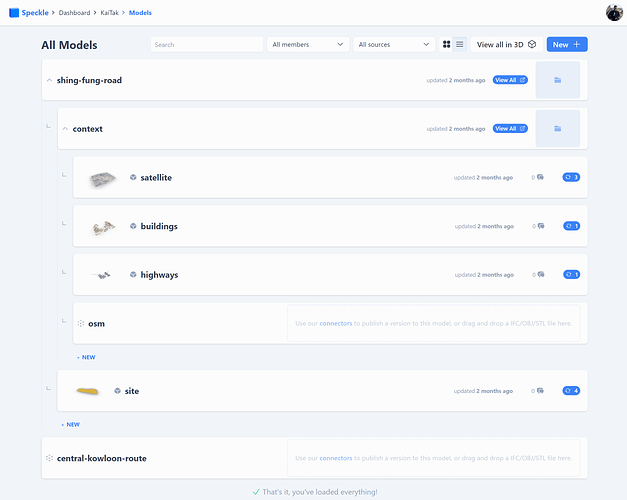Hi everyone!
I also think FE2 is looking great, and wanted to start using it a bit more on a new public project:
https://app.speckle.systems/projects/013aaf06e7/models/0e43d1f003,0fa0287ba8,a739490298,c59c767566
Now, I want to start using the GH connector, so I use the URL as I used to with FE1.
What I find a bit more complicated with the new URL structure is:
-
How do i see whether I’m looking at the latest version of a model vs a specific model of a version?
Previously, I found this quite clear with branches vs commits, but now I have to see it by the @ symbol, right?
And then I also noticed that sometimes there’s a %+hash. What does that do?
https://app.speckle.systems/projects/013aaf06e7/models/0fa0287ba8
https://app.speckle.systems/projects/013aaf06e7/models/0fa0287ba8%40dfbec71408
It seems to have something to do with how I arrive to a version of a model, when I first go into a model and then select another model I get a URL with an @ symbol, when I go to versions and then go into a version of that model I get a URL with a % symbol.
Curious to hear what the logic behind it is, as I find it a bit confusing right now , and hard to see from the URL (which is what you see when you’re in a GH script) whether you’re using the latest model or a specific version of that model.
, and hard to see from the URL (which is what you see when you’re in a GH script) whether you’re using the latest model or a specific version of that model. -
I cannot see the from the URL what the name or nesting of my model is, right?
I thought it was very handy to be able to nest models by discipline, purpose, building, etc, and I just found out that I can look at this nested models view in the browser and then “View All” at any top level
However, I can no longer see the name or nesting from the URL of a model, right?
So in GH it won’t directly be clear from a script.
